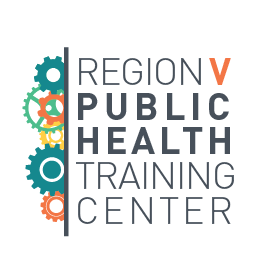By Devangna “Guddi” Kapadia, MS, MPH, University of Illinois, School of Public Health
The University of Illinois at Chicago Center for Healthy Work (UIC CHW) is a research and education center established in 2016 to advance the health and well-being of workers in Chicago, the state of Illinois, and the nation. The Center’s mission is to remove barriers that impact the health of those employed in precarious jobs. Precarious work is a term that describes work that is unstable, unpredictable, or otherwise risky for the worker, including low- and minimum-wage jobs, jobs lacking opportunities for advancement, contracted/temporary jobs, and jobs without benefits or protections from exploitation and abuse.
Our center is one of ten Centers of Excellence for Total Worker Health®, funded by the National Institute for Occupational Safety and Health (NIOSH). Total Worker Health is defined as policies, programs, and practices that integrate protection from work-related safety and health hazards with promotion of injury and illness prevention efforts to advance worker well-being.
In spring 2017, the Healthy Communities Healthy Work project conducted an environmental scan: guided interviews with fifty-five national, state, and local organizations across public health, healthcare, nonprofit, labor, legal, research, and education sectors. Topics covered in the environmental scan included:
- Organizational perceptions of worker health, including strengths, opportunities, challenges and threats related to healthy work in the context of precarious work
- Existing efforts that support worker health promotion and protection
- Policy-level proposals underway that address precarious work
- Initiatives that build capacity for workers to advocate for their health and rights at work
- Communication channels used to distribute and share information across partners and stakeholders
The results from this environmental scan highlighted public health and healthcare organizations’ limited knowledge and action surrounding precarious work, and a lack of collaboration between health and labor organizations despite the recognition that work is a key social determinant of health. Findings were used to develop the next phase of the project: an intersectoral capacity-building initiative called the Healthy Work Collaborative to Map Action for Social Change (HWC). Representatives from the labor sector provided technical assistance and facilitated in-person trainings to help these organizations define precarious work and develop action plans for implementing policy, systems, and environmental change initiatives that address precarious work within their jurisdictions/communities. Facilitated trainings focused on:
- Understanding the Problem: What is Precarious Work? Systems Thinking, Rich Picture
- Systems, Strategies, and Approaches: Power Mapping, Framing Exercises, Understanding Existing Approaches
- Theory of Change: Stake and Outcomes Decisions, Theory of Change Development
The Healthy Work Collaborative Process Guide provides more details on how to use the tools identified as key components for the collaborative efforts. Each step presented builds upon the next to guide public health practitioners to the skills needed to address precarious work and health disparities. The HWC Process Guide highlights critical activities for collaborative groups interested in a more deliberate process. The Healthy Work Collaborative: Examples from the Field presents case studies describing each team’s efforts over the course of the Healthy Work Collaborative. Each case study describes:
- The issue the team hoped to address (Recognizing the Need),
- Why each organization chose their particular approach (Starting the Conversation),
- How the collaboration functioned and interacted (Building Relationships),
- What the collaboration accomplished (Gaining Momentum),
- Challenges and opportunities gleaned from the experience (Lessons Learned), and
- What each team hopes to accomplish in the future (Looking Ahead).
Our hope is that these case studies will inspire similar efforts across the country, increasing our national capacity to make healthy work a reality for all workers.
UIC CHW recently released a five-video series highlighting key concepts from the collaborative tied to case examples from participants from the original HWC. These videos highlight the concepts in hopes of creating more interest in having localized Healthy Work Collaboratives developed in other areas. The Center partnered with Candice Majors, a Chicago-based Cinematographer with over 8 years of experience behind the camera. With her expertise, the Process Guide was turned into the HWC Online Toolkit. Each of the Healthy Work Collaborative steps have been transformed into short videos that include interviews with subject matter experts as well as engaging and entertaining animation to help bring life to large theoretical concepts such as Power Mapping and Theory of Change. Our goal is to develop videos to capture interest and provide introductory materials for agencies to implement their own Healthy Work Collaborative.
For agencies that may be interested in implementing their own Healthy Work Collaborative, the Center is excited to provide supplementary resources and technical assistance.
The Healthy Work Collaborative Step-by-Step Videos promote collaborative approaches to advancing worker health by helping organizations:
- Develop a shared understanding of precarious work and pathways to healthier work
- Explore how policy, systems, and environmental changes can improve health in the context of precarious work
For support implementing any of the Healthy Work Collaborative tools within your own organizations, contact us at [email protected].
To learn more, check out these resources:

